Overcoming the Forgetting Curve
Overcoming the Forgetting Curve
Students forget 70 percent of what we teach within 24 hours
While forgetting depends on many factors, research shows that, on average, students forget 70 percent of what we teach within 24 hours of the training experience (Figure 1). This is a “dirty secret of training” because while we all know it is true, training organizations spend 60 billion dollars a year on training programs knowing full well that most of that knowledge will quickly disappear.
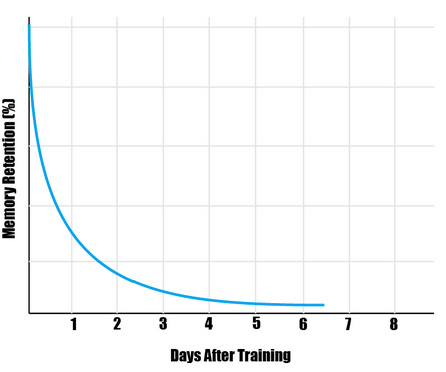 Figure 1: The forgetting curve, training’s dirty secret
Figure 1: The forgetting curve, training’s dirty secret
Forgetting is usually an active, adaptive, and even desirable process. After all, most of the things we remember (like where we set our glasses), are only of short-term importance, and after a day or so the brain needs to suppress such time-limited memories in order to free space for information that may be of more immediate value.
Coping with the forgetting curve
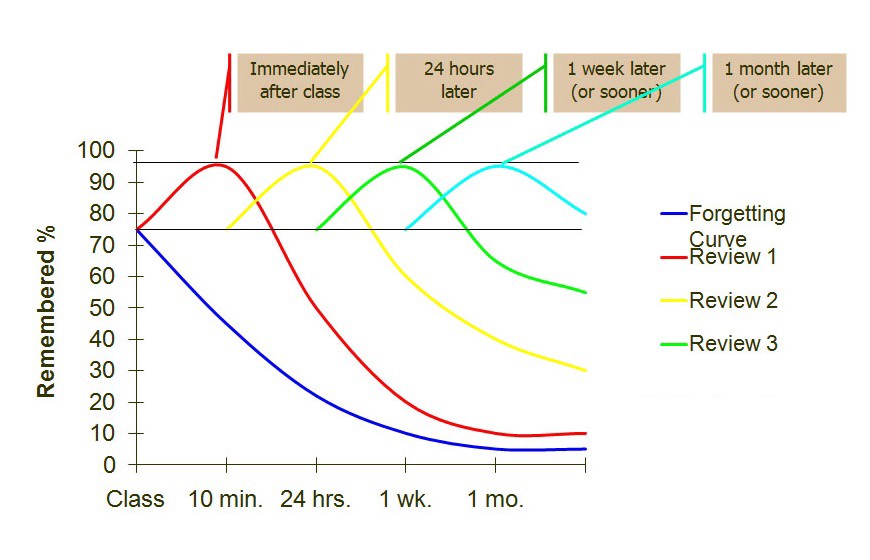
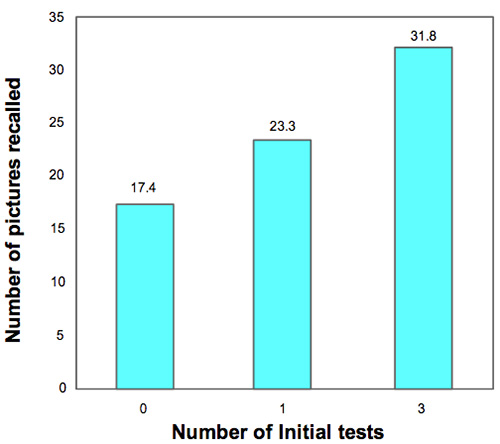 Figure 2: The opportunity to recall pictures immediately after training significantly increased the chances that they remembered the information a week later
Figure 2: The opportunity to recall pictures immediately after training significantly increased the chances that they remembered the information a week later
 Figure 3: More evidence that when you force a learner to recall information in the hours and days after training they are far more likely to retain that information in the long run
Figure 3: More evidence that when you force a learner to recall information in the hours and days after training they are far more likely to retain that information in the long run
Use it or lose it
Why do booster opportunities cause the brain to retain information? One explanation, based on the idea mentioned above, is that your brain wants to retain information that is useful to you and purge information that is not. And so, if you happen to call that information into your mind in the hours and days after training, your brain tags that information as important and is more likely to retain it. If you use it, you won’t lose it!
So what do these results mean for corporate and industrial training? In short, if you provide your learners with booster events in the hours and days after training you can reshape their forgetting curve. For example, if you provide employees with a leadership seminar on Monday, you can expect that most of this information will be lost within a week. However, if you provide a booster event, such as a multiple-choice questionnaire, it causes the learner to recall the information, which will reset the learner’s forgetting curve (see Figure 4). Furthermore, strategically providing a series of these booster events will reset the forgetting curve each time and will maximize long-term retrieval (Figure 5).
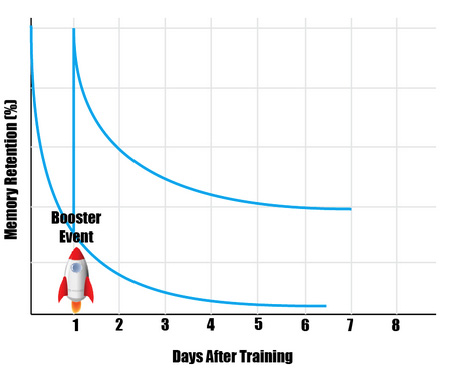
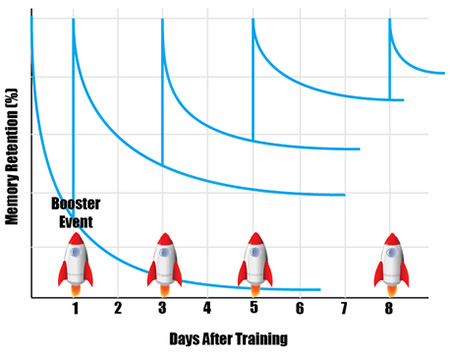
An important note here is that these booster events improve retention for the entire learning experience, and not just for the particular topics in the quiz question. This “halo effect” means that just a few booster experiences can enhance the retention of the entire training session.
A strategy for moving forward
Booster training provides an amazing opportunity to enhance the ROI of our training programs. Let’s take our heads out of the sand and not allow the forgetting curve to flush away 70 percent of our training. We can do better.
So here is a mantra to yell over the top of your cubicle. If your goal is to produce long-term retention, and if your goal is to produce behavior change, then what you do after training is more important than what you do during training. If you do nothing, people will forget most of your training. However, if you provide them with a series of booster experiences, you will signal the learner’s brain that that particular information is important and, in turn, they will be far more likely to remember it.